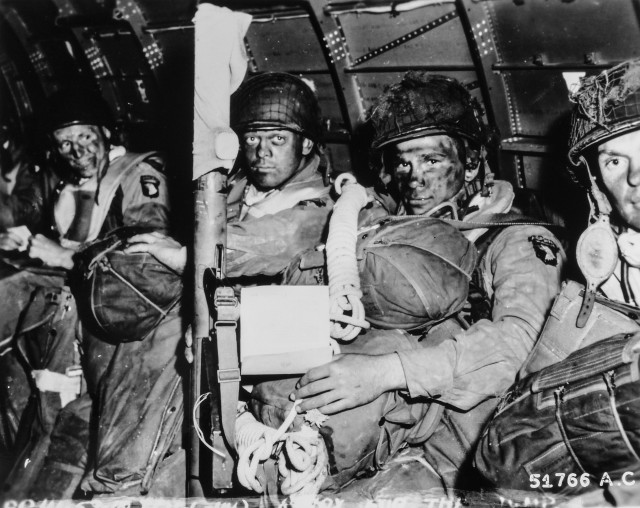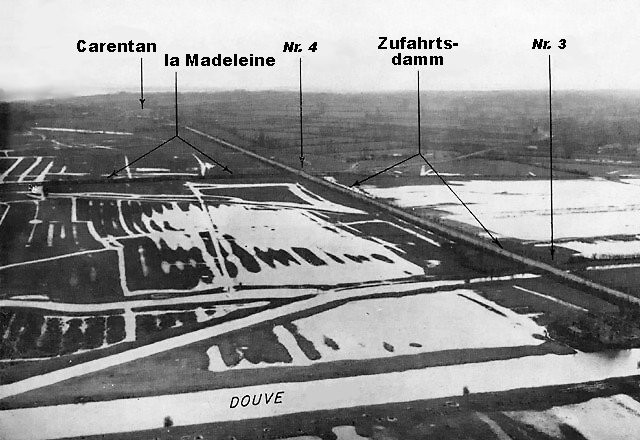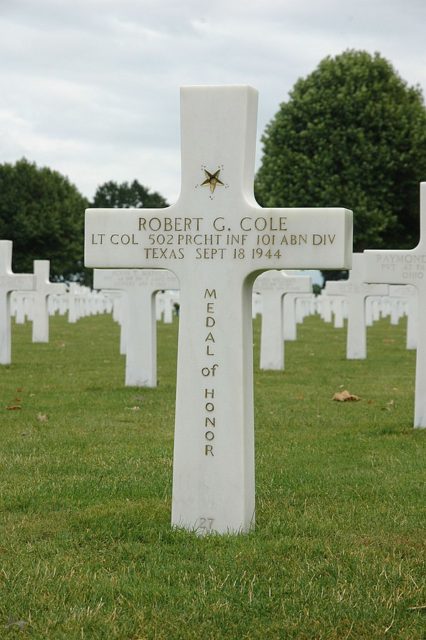Operation Market Garden would claim countless American lives in September of 1944, one of whom was a man set to receive the Medal of Honor just two weeks later.
In the largest airborne assault ever seen, tens of thousands of American paratroopers descended from the skies over the Netherlands to secure vital bridges ahead of rapidly advancing ground forces. For Lieut. Col. Robert Cole and many other men of the 101st Airborne Division, this was not their first jump into combat.
Already hardened veterans from the D-Day invasion, Lieut. Col. Cole led his men into the face of a surprisingly resilient and prepared German defense in the Netherlands. But Cole had been here before. Just months earlier outside of Carentan France, he led his battalion on a ferocious bayonet charge into the German-occupied hedgerows that would earn him the Medal of Honor.
As is often the case in war, Lieut. Col. Cole would never live to receive it as he fell in the fields of the Netherlands where he remains to this day.
Always Leading from the Front
Robert Cole was born in Fort Sam Houston in San Antonio Texas in 1915. His father was a Col. and Army doctor who laid a foundation of military service for his son. Cole joined the Army in 1934 but was honorably discharged in 1935 after he received a successful appointment to the United States Military Academy at West Point.
After graduating with the class of 1939, he was commissioned a second lieutenant to the 15th Infantry at Fort Lewis Washington. However, Cole was destined to enter the battlefield not from the ground, but from above.
In 1941, he was transferred to the 501st Parachute Infantry Battalion and earned his jump wings at Fort Benning Georgia. As the American military was fully embracing the potential of airborne assault, the parachute ranks were rapidly expanding. As a result, when the battalions were expanded into regiments Cole would quickly find himself a Lieut. Col. by early 1944 and in command of the Third Battalion of the 502nd Parachute Infantry Regiment.
In 1943, the hundred and first Airborne Division made its way to England in preparation for the European invasion.

In the early hours of June 6, 1944, Lieut. Col. Cole’s battalion descended over Normandy. Gathering what men he could find after the chaos of the jump, he secured his objective behind Utah Beach and was there to greet the 4th Infantry Division as they pushed past the beachhead.
During the ensuing days, the allies were in a fight to take Carentan. By June 10, Lieut. Col. Cole and 400 other paratroopers were advancing towards the target city along a very dangerous and exposed causeway surrounded by marshes and the infamous hedgerows of France.
It was here just outside of Carentan that Lieut. Col. Cole would lead a rare bayonet charge and secure his place in military history.
Hand to Hand Combat
During the advance on the city, Cole’s Battalion was riddled with continuous artillery, machine gun, and mortar fire. The Germans had set up obstacles that made a bottleneck out of any attempt to press forward. As a result, Cole set up defensive positions for the night where they continued to suffer from heavy enemy fire.
By morning, approximately 250 of his original 400 men were left in fighting condition. Realizing the situation was becoming grim, Cole ordered smoke thrown towards the heavily defended hedgerows and personally led a bayonet charge towards the German lines with a pistol in one hand and bayonet in the other.

While the charge initially began as just Cole and a small portion of his unit, the rest of the Battalion took notice at what was happening. Feeling inspired by their commander’s leadership, the battalion picked up and thrust themselves into the German-occupied hedgerows.
The fighting was at close quarters and hand-to-hand, but the men of Lieut. Col. Cole’s battalion overpowered the German defenders and made them pay a high price as they fled from the assault. Approximately half of the men who took part in this dangerous charge became casualties, but it was credited as a key moment in breaking through the German defenses and pushing on towards Carentan.
For his leadership and conspicuous gallantry, Lieut. Col. Cole was recommended for the Medal of Honor. However, there was still a lot of war to be fought and Lieut. Col. Cole pressed on with his battalion in the ensuing campaigns to take Germany.
After Normandy, the 101st returned to England to replenish their forces with replacements and prepare for the next jump. It just so happens that for Lieut. Col. Cole’s battalion that would be Operation Market Garden and the largest airborne assault ever seen.
At the Front Till the End
After descending upon the Netherlands, the paratroopers found themselves in a pitched battle with the Germans as they attempted to secure the key bridges necessary for the rapidly advancing armor behind them. Cole’s battalion was tasked was seizing the bridge over the Wilhelmina Canal in Best.
Under heavy artillery fire, his battalion was pinned down and seeking Allied air support to direct fire on the German positions. However, during the chaos of the battle, the Allied planes were actually firing at Lieut. Col. Cole’s men.
Furious, he ordered his men to place airplane recognition panels in front of their lines to redirect the American airpower. When this wasn’t happening fast enough, Lieut. Col. Cole ran out himself in front of the lines to place the panels. The American airplanes recognized the signal and directed their fire back upon the Germans.
While looking up into the skies for the planes, Lieut. Col. Cole was struck by a single sniper bullet to the head which killed him instantly on September 18, 1944.

Lieut. Col. Cole was buried at Netherlands American Cemetery and Memorial in Margraten the Netherlands. Two weeks after his death, he was awarded the Medal of Honor for his bayonet charge near Carentan.
Cole’s widow and two-year-old son were present while his Medal of Honor was posthumously given to his mother at Fort Sam Houston Texas. Lieut. Col. Cole always saw it his duty to be at the front where his men were doing the fighting.
While his conspicuous gallantry might have cost him his life in combat, he inspired his men with such leadership and laid a foundation for the elite class of men that can call themselves airborne.
